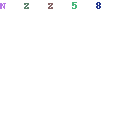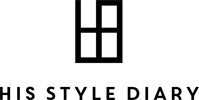In my previous article on Suit 101: Anatomy of the Suit, I looked at the various components of a suit jacket and the different ways of making it. Let’s turn our attention now to another important, yet often neglected, part of the suit - the trousers. In fact, what I am going to talk about applies to general tailored trousers as well.
The trousers is a garment that every man need to have in his closet, but few men really understand the importance of a great fitted trousers. Wearing a pair of trousers with poor fit and style can ruin your overall look, while a great one will create a stylish and professional appearance for you.
Let’s look at the details of the trousers in below.
Pleats or No Pleats?
The topic on pleats is probably the most debated about. The trendy ones will insist that non-pleated pants is the way to go and it creates a clean and slim look. While I tend to agree with that as well, it is also important to note that not everyone is build like a runway model.
Pleated trousers(single or double pleats) works to provide comfort and movement for the trousers like sitting down or putting your hands into the pockets. Therefore, for people who are bigger(especially around the waist), wearing a flat front trousers might be very uncomfortable and look really tight. He should try to go for a single pleat on each side, it is still up-to-date and gives room for comfort.
Trouser Cuff
Cuffs on trousers are sometimes worn based on personal preferences or as dictated by fashion. The cuffs should be up to 2.5cm to 3.25cm(1-1.5inches). A wider fold will take away from a man’s height. If you have shorter legs proportion to your total body, you might want to avoid the cuffs. Rule to remember here is that cuffs will create a illusion of a shorter legs and uncuffed pants will extend your legs.
Uncuffed trousers are classic and timeless, and remember to have the back slight longer then the front.
Note: While most type of pants have cuffs, the exceptions are morning coats, tuxedos and tailcoats; trousers worn with these coats never have cuffs.
Rise
The rise in trousers is the part between the crotch and the waist(point below the belly button) and gives a man height if worn correctly. The length of the rise also affect the fit around the crotch. If you have shorter legs than body length, avoid low rise and go for a high rise to create the look of a longer legs.
People with a bigger stomach might also want to consider a higher rise for a more comfortable fit, so your pants are not hidden underneath the ‘potbelly’ or constantly slide off.
Pockets
Choice of pockets are very personal. They are placed in front , at the thighs, and in the rear. Straight pockets are cut parallel with the waist band and most often on the back of the trousers. Slant pockets are used for pleated trousers, or for fitted flat front trousers.
Trousers Width & Length
Both the width and the length of trousers can seriously influence its fall. The fit should be carefully examined by standing straight and walking around. Trousers should be narrow, wide or straight but should never crease along the thighs and the waist. They should be long enough to drape slightly over a third of the top of the men’s shoes. Always wear a pair of shoes when trying on trousers. Trousers that are too short will look ill-fitting, too long and it collects at the top of the shoe, destroying the drape of the trousers.The correct length of the trousers has an impact on the body to leg proportion.

